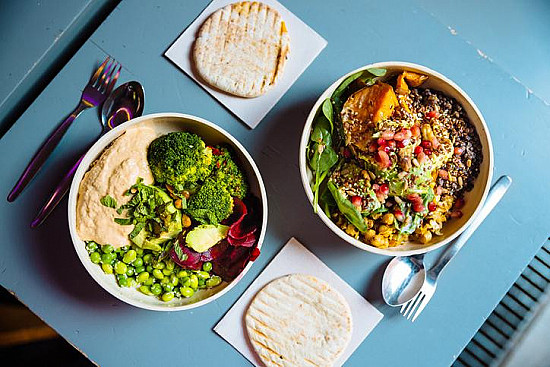Harvard Health Blog
Easy hacks to understand new terms on food labels

Confession: I hardly go food shopping anymore. Too many choices and too many square feet in the grocery store make grabbing a few ingredients more like a dizzying test of attention and focus. Fortunately, my husband Jay is our hunter-gatherer. When he has a question about a particular item, he texts me — usually about some new food term. "Organic tomatoes or conventional?" he'll ask, or "Is farm-raised salmon okay?"
Jay isn't the only one asking these questions. "I think that people of all ages are confused by this," says Vasanti Malik, a nutrition researcher at the Harvard T.H. Chan School of Public Health.
Quick hacks
Definitions of food terms vary depending on the farm, manufacturer, and federal or state rules. Generally speaking, however, here's what the terminology means.
Natural. The FDA doesn't have a definition for "natural," although it doesn't object to the term if a food does not contain added color, artificial flavors, or synthetic substances.
Organic. For food to be certified "organic," the USDA has strict requirements:
- Plant food must be produced according to strict farming and production standards, without genetic engineering, radiation, sewage sludge, or synthetic pesticides and fertilizers.
- Animals raised on organic farms receive no antibiotics or growth hormones, are given feed that has been grown organically, and are able to roam around outside.
Free-range chickens. The USDA defines free-range chickens only as poultry allowed access to the outdoors. Some third-party organizations will certify poultry as free-range if the birds are allotted about two square feet per bird on the farms where they're raised and are fed corn- or soy-based feed.
Pasture-raised chicken. This certification comes from third parties, not the government. These chickens are given at least 108 square feet each (1,000 birds per 2.5 acres), and they consume feed as well as grass and bugs they find outdoors.
Grass-fed meat. Only third-party organizations provide certifications for grass-fed meat. The term means that animals (such as cows) were allowed to graze in pastures. Grass is higher in healthful nutrients such as omega-3 fatty acids and B vitamins than the corn- or soy-based feed that animals are typically fed.
Wild-caught salmon. This indicates that the salmon was caught in the wild, such as the ocean, and not obtained from a fish farm. If it's certified, it's by third-party organizations. All Alaskan salmon is wild-caught.
Non-GMO foods. These foods contain no genetically modified organisms (GMOs). GMOs are created when scientists alter plant DNA. This can make crops resistant to bugs or fungi. Common GMOs include corn, soybeans, and sugar beets. GMOs are in many products, but labeling is only voluntary.
Gluten-free foods. These foods are free of the protein gluten, which is found in grains such as wheat, rye, and barley. In order for a food to be labeled "gluten-free," the FDA says that the food can contain no more than 20 parts per million of gluten. Foods made with non-gluten grains, such as millet, may also carry the gluten-free label.
Better for health?
Organic foods don't appear to have a nutritional advantage over conventionally grown food. And it's unclear if the pesticides used in organic farming are safer than pesticides used in conventional farming.
We don't know yet know if the lack of hormones and antibiotics in organic animal products makes them healthier than conventional animal products, but it's a reasonable possibility.
Malik offers these insights: "Pasture-raised chicken contains more healthy omega-3 fatty acids and other vitamins because of the more natural diet. Grass-fed beef is leaner. Wild-caught salmon tends to have lower levels of toxins such as mercury. It's heavily debated whether using GMOs alters the nutritional quality of food or poses a threat to health."
What you should do
Knowing that many of these terms are still debated makes food buying even more challenging. So does the fact that many of these foods cost more than conventionally produced foods. Should you make the investment?
"Choose an abundance of fruits and vegetables to best fit your budget — a combination of organic, conventional, and frozen. If you can, go with wild-caught fish and pasture-raised chickens and their eggs, where available," recommends Malik.
It's a good rule of thumb, whether you're in the store or texting the hunter-gatherer in your family.
Disclaimer:
As a service to our readers, Harvard Health Publishing provides access to our library of archived content. Please note the date of last review or update on all articles.
No content on this site, regardless of date, should ever be used as a substitute for direct medical advice from your doctor or other qualified clinician.















